The Canon AE-1 Program is one of the most popular camera models of all time. It came out at a time when most of the features we now take for granted didn’t even exist, and it was one of the first cameras to include an automatic shooting mode, awkwardly called “Program” back in the day. This meant that regular users could produce extremely high-quality images by simply pointing the camera towards their subject and pressing the shutter release button. Unsurprisingly, Canon sold a kazillion of these during the 1980s, and even today it continues to be among the easiest models to find on eBay.
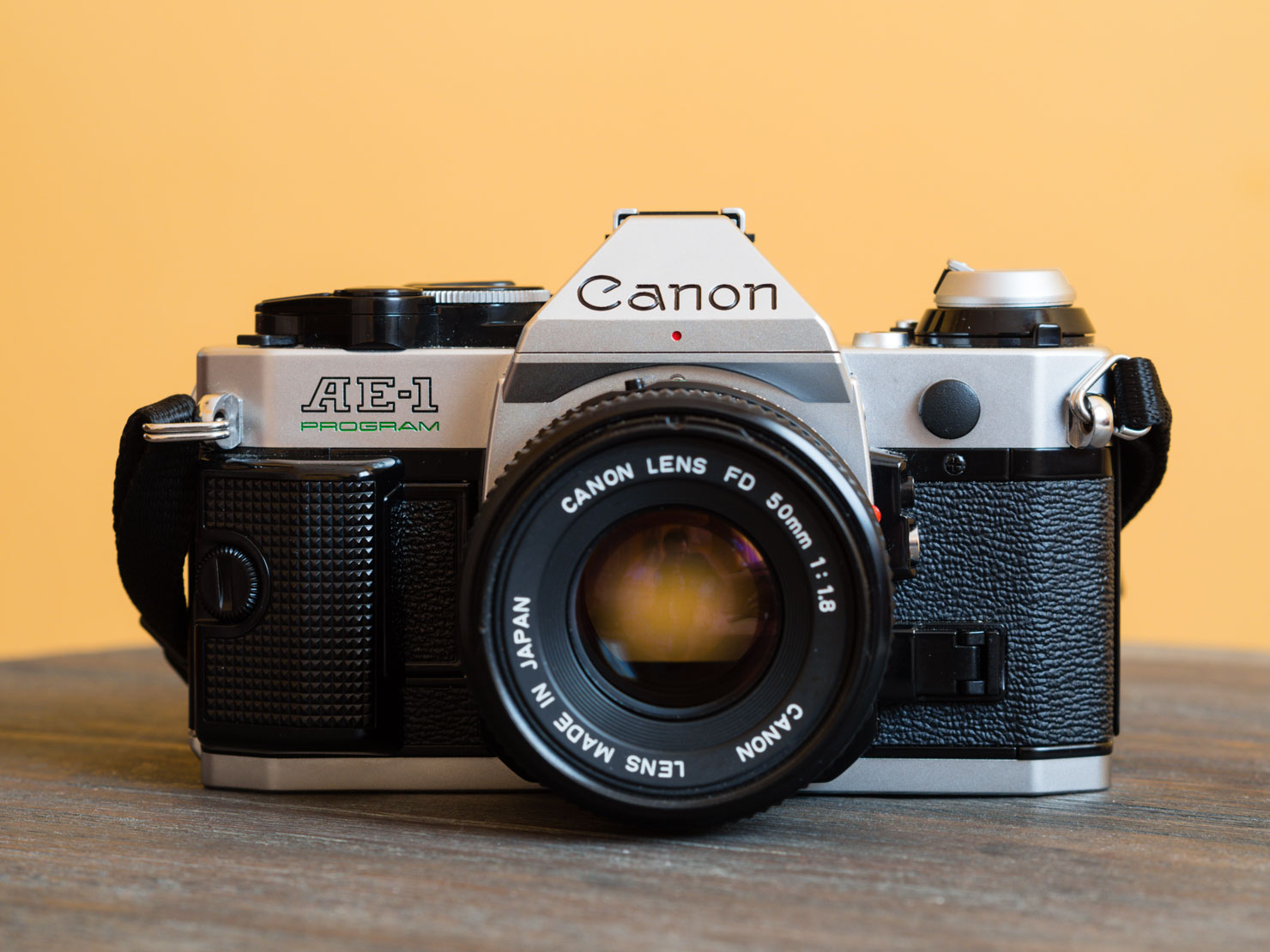
Canon AE-1 Program with Canon FDn 50mm f/1.8 lens.
Mine didn’t come from eBay, though. It’d been lying around inside my dad’s closet for as long as I can remember — it’s actually older than I am — and I always remember my dad being extremely protective of it when my brother and I were kids. That’s perhaps what makes it so special for me: last year, when my dad finally gave it to me, it almost felt like a rite of passage. Like I was finally ready to be trusted with one of his most prized possessions — which is saying a lot, given my dad’s general lack of interest in material things. I’ve never known my father to be a nostalgic man, but there’s undoubtedly something unique about this camera, something that moved him to preserve it in pristine condition for decades.
Now that I’ve been using it for a few months, I think I know what that is. The Canon AE-1 Program could very well be the perfect memory-making machine, and one of the best ways to experience photography in its purest form.
Taking control of your images
The Program mode was arguably the biggest selling point of the AE-1 Program back in the 80s, but the camera offered many more interesting features for the more advanced user, which made it a commercial hit among all kinds of photography enthusiasts.
As convenient and worry-free as the Program mode is, where the AE-1 Program really shines is in full manual mode. With an exceptionally well designed control layout, this camera puts you in the driver’s seat and allows you to customize every aspect of your exposures quickly and efficiently as you go along.
The Canon AE-1 Program offers just the right amount of options, without all the clutter present in modern cameras. You have a shutter speed dial, a film advance lever, the shutter release button and that’s pretty much all you need. Set the shutter speed you want, select the aperture on the lens, confirm that the exposure is correct with the viewfinder’s built-in display, and fire away. Repeat as needed. This is simplicity at its best. Brilliant.
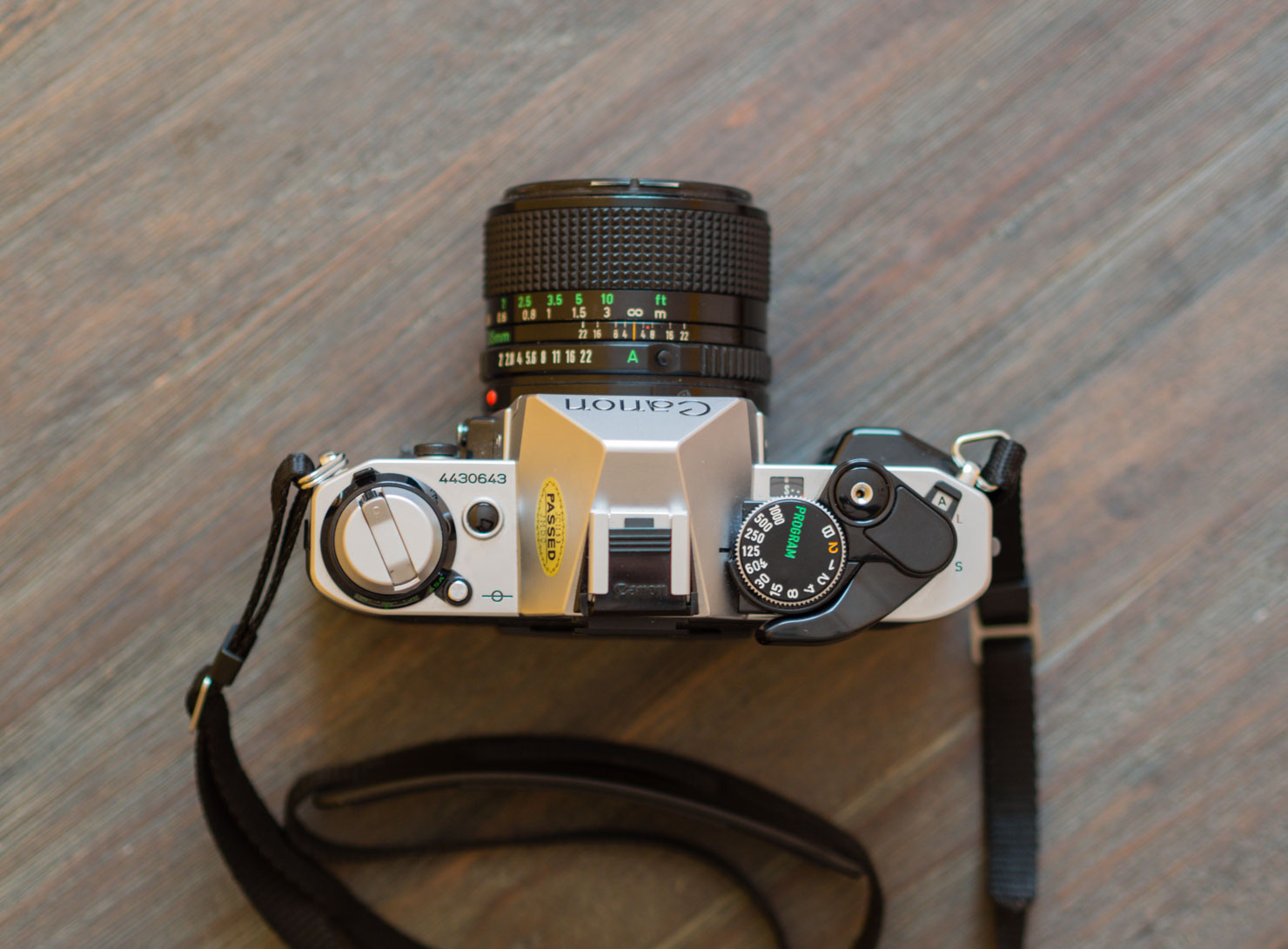
The top plate features all the main controls.
Besides Program and manual mode, the AE-1 Program also features a shutter priority mode, which is engaged by setting the lens aperture to “A” on the aperture ring. This allows you to shoot freely by simply dialing in the desired shutter speed, as the camera will select the appropriate aperture automatically. And if the particular lens you’re using doesn’t offer the needed aperture for the selected shutter speed, a warning sign will light up in the viewfinder’s display, urging you to choose a different speed instead.
There’s also a bulb mode, which allows for capturing long exposures with ease. Of course, you’ll need a tripod and a remote trigger for this feature to work well, although if you’re using this camera today, I honestly don’t think it’s for its long-exposure capabilities.
She’s a looker
The AE-1 Program is a truly beautiful camera. Its design takes a page from the classic Leica rangefinders, only adapted to an SLR body. Unfortunately, that’s where the similarities end because, while the Canon is very well built, it’s nowhere near the build quality of a classic Leica.
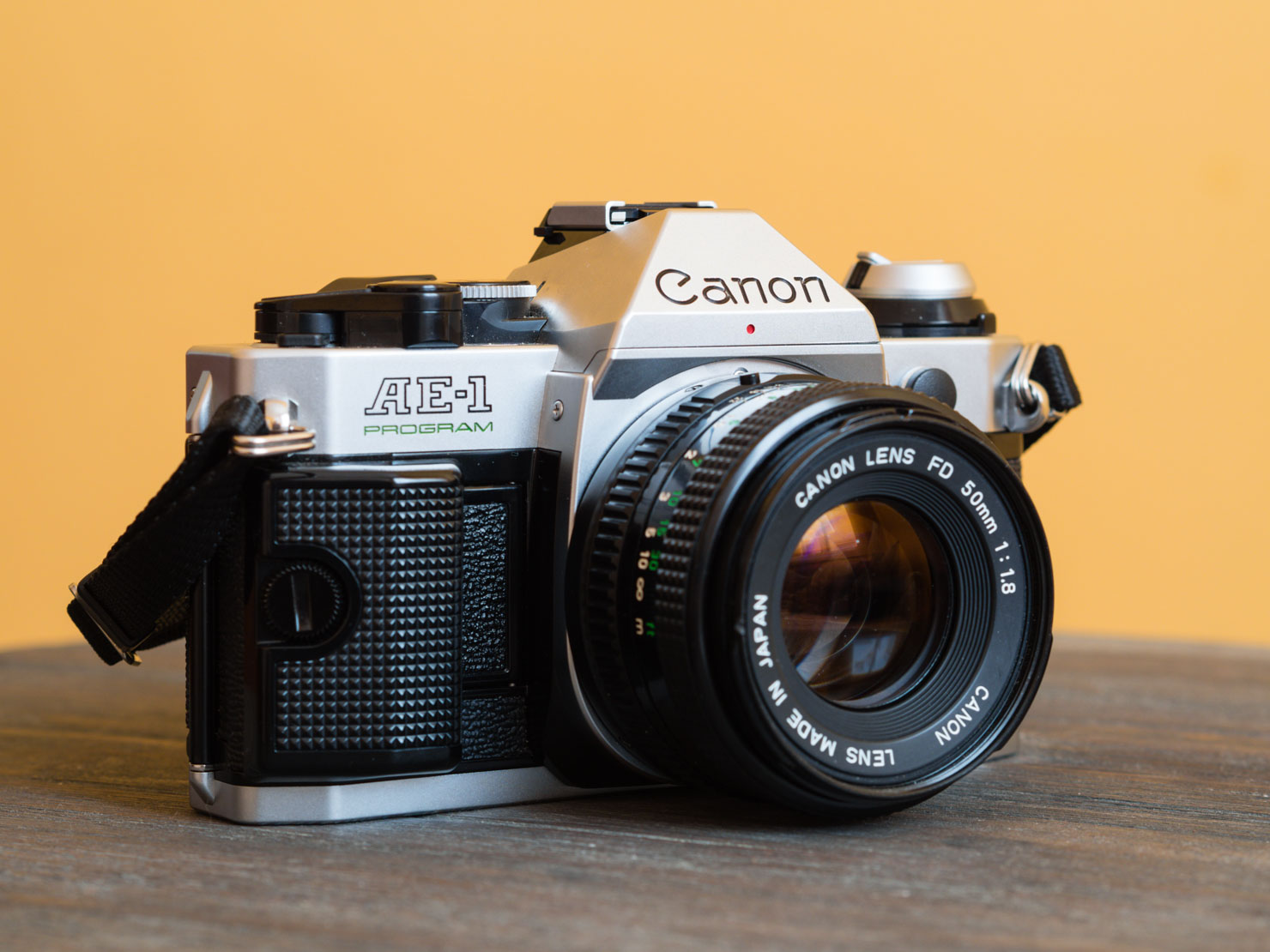
The top and bottom plates are made of chrome-plated plastic. They feel nice and solid, but it’s definitely not an all-metal body. It doesn’t need to be though, as this is purposely a consumer-grade camera.
The rest of the body is made of textured plastic, and provides just the right amount of grip. The AE-1 Program handles beautifully, and it’s just the right size for my hands. It’s a lot slimmer than today’s DSLRs, mostly because there are not many electronics inside. It’s also pretty light, although once you factor in the lens it certainly becomes a bit heavier than most mirrorless cameras. It is, after all, a full-fledged SLR.
On the top left there’s the ASA selector, which allows you to dial in the speed of your film. This is the classic equivalent of modern ISO, which is always necessary to configure because films with different speeds will need different exposure parameters. Once you select the appropriate speed, you can just forget about it until you change to a different film type.
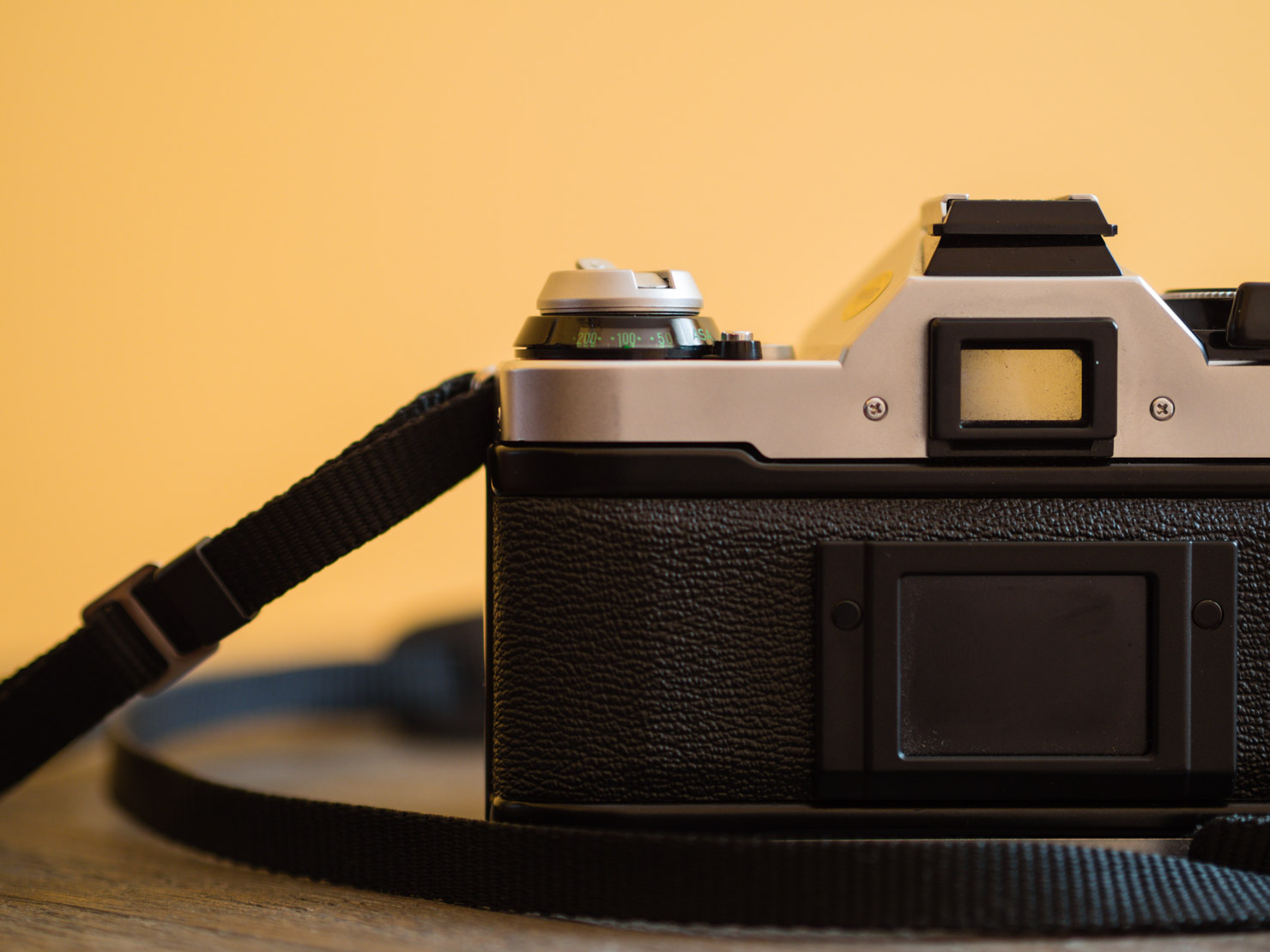

The ASA selector is on the top left.
The back of the camera is elegant and sober, without any superfluous elements. It includes a card holder, which you can use to store a reminder for the type of film roll that’s loaded in the camera and the number of available frames in the roll.
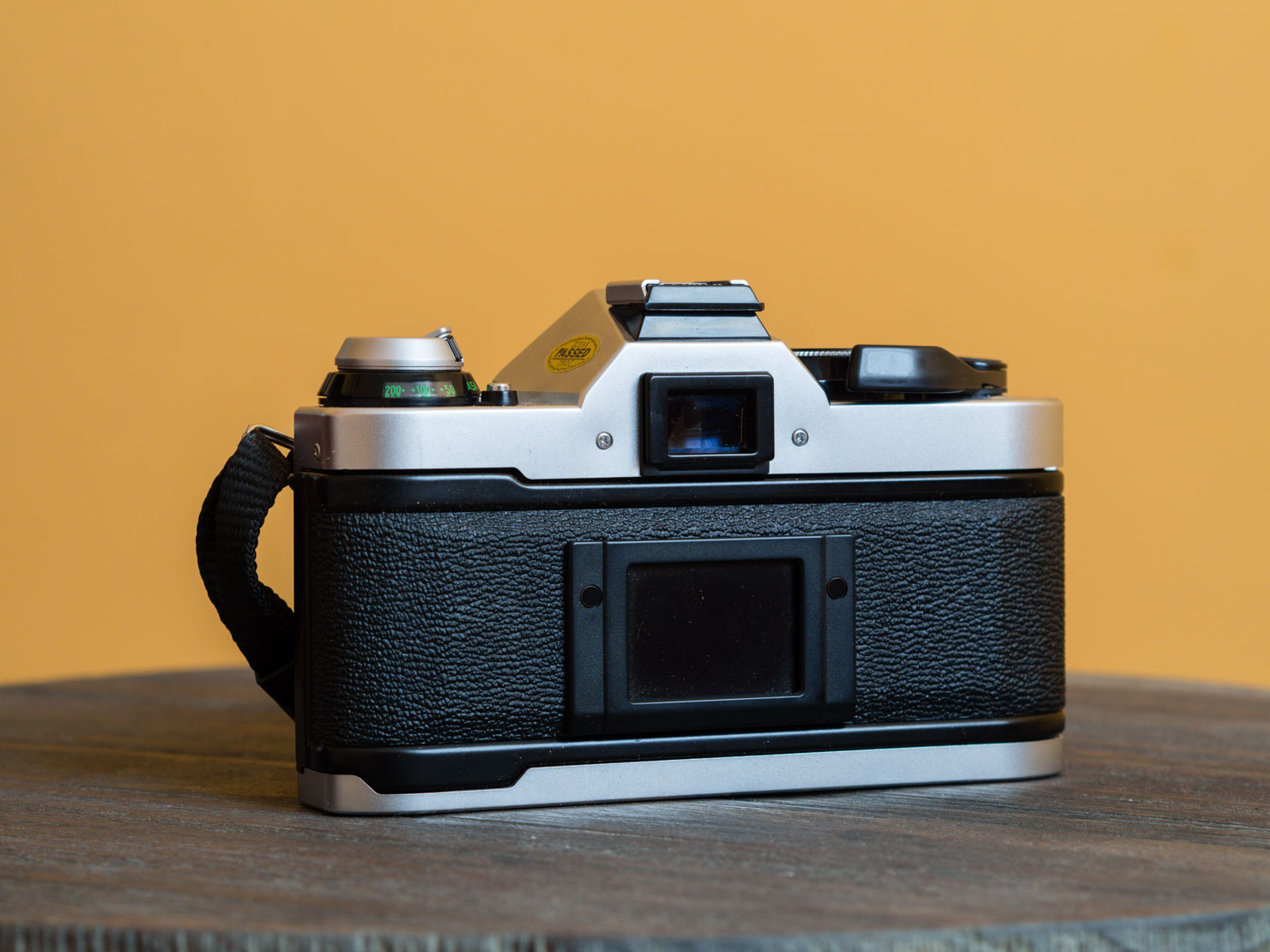
The back of the camera is simple and elegant.
The viewfinder is huge and bright, and it makes it really easy to compose shots with any FD lens, even in poor lighting conditions. It also has a built-in display with everything you need to know to select the right exposure parameters.
There are several vertically aligned LEDs to the right of the viewfinder, which display the appropriate aperture for the selected shutter speed. This is great when shooting in manual or shutter priority modes. Unfortunately, the display doesn’t show the selected aperture, just the one suggested by the AE-1 Program’s metering system. You’ll still need to take a look at the lens to make sure that the correct aperture is selected, unless you set the aperture ring to “A”, in which case the camera will use the right aperture for you automatically.
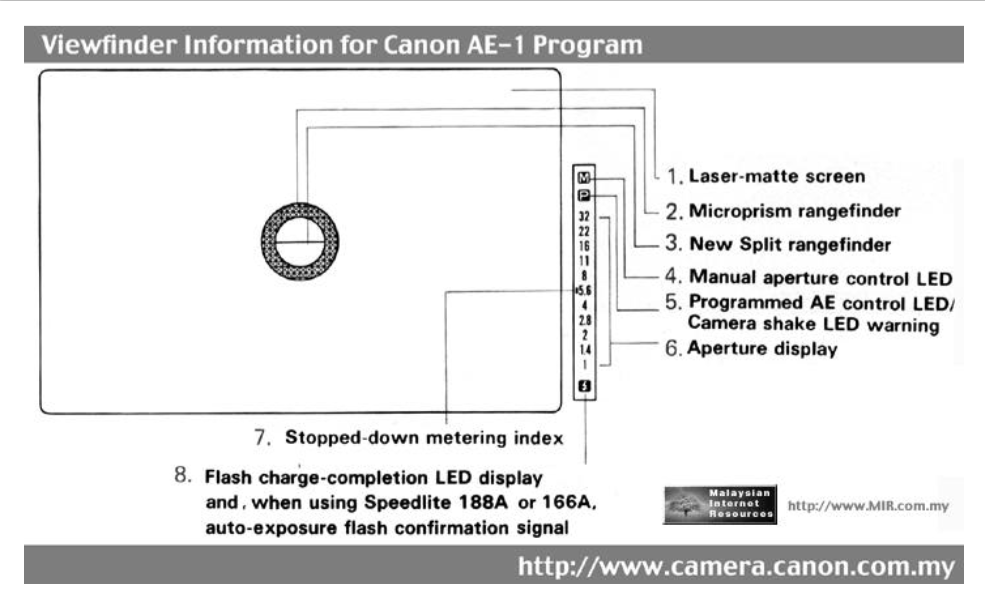
Viewfinder information. Source: Malaysian Internet Resources.
There’s of course no autofocus in the AE-1 Program, but manual focusing is a breeze with its bright viewfinder and the help of focusing screens. I only have one, but the AE-1 Program originally shipped with several interchangeable screens optimized for different types of scenes. I’m very happy with mine though, which includes a microprism ring and a split rangefinder, and I’ve found it works very well in the vast majority of situations.

The shutter release is silky smooth, and produces a wonderful sound I’ve already come to associate with gorgeous images. The shutter speed goes up to 1/1,000th of a second, and while the AE-1 Program won’t set any kind of speed record, it offers a perfectly adequate speed range for most photo opportunities. And if it’s too bright, you can always use ND filters to reduce the amount of light pouring in through the lens to work with the given maximum shutter speed. There are simply no unsolvable problems with this camera.

Loading film onto the AE-1 Program is quick and easy: just pull the rewind lever upwards and the back plate pops open, revealing the film holder compartment. Put a roll in, pull the film towards the right side until it fits in the film holder, advance the lever and you’re done. Just close the lid again and you’re ready to shoot.
Pro-tip: By being careful and advancing only a bit of film in the loading process, I’ve managed to squeeze up to 38 shots out of a single roll of 36. This varies depending on the film type, but generally, you can get at least one good extra shot if you’re careful when loading the film.


Loading film is quick and easy with the AE-1 Program.
Another thing I just love about the AE-1 Program is its incredible battery life. It uses a single battery that is concealed behind the grip, and it can just keep on firing away for ages. When I first grabbed the camera out of storage, the original 20-year-old battery that was inside still worked! I only replaced it for a new one as a precaution, but I’m sure even after all that time, it still would have lasted for a pretty long while.
The camera won’t work without a battery though, as it needs the power to release the shutter and for the metering system to work. I suppose it doesn’t hurt to keep a spare battery handy, even if it’ll be years before you actually need to use it.

Other than that, there are several nice details that add to the overall usability of the AE-1 Program like the battery-check button, the AE-lock button and the depth-of-field preview button. And of course, the super-awesome, all-leather original carrying case that my father bought for it, which is almost as cool as the camera itself.

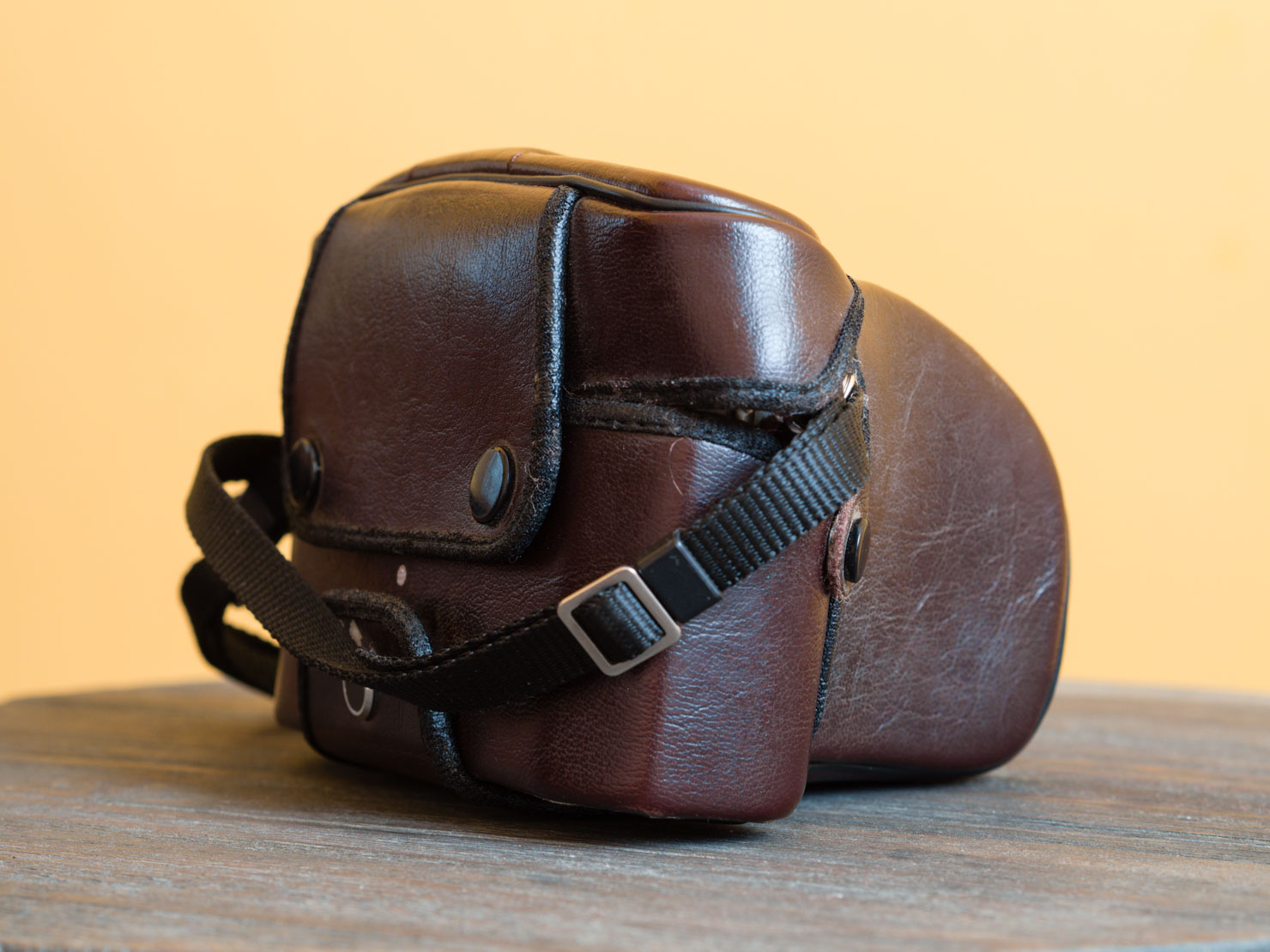
All in all, the AE-1 Program has a really solid and delightful design which is every bit as pleasant to look at as it is to use. What else is there to ask for?
It’s the lenses, dummy
The AE-1 Program features the then top-of-the-line Canon FD mount. FD lenses are all manual-focus only, and many of the primes provide excellent image quality, even by today’s standards. These lenses remain very popular in the used market because, thanks to their all-mechanic construction — including manual aperture rings and distance scales — they can be used with today’s mirrorless cameras via inexpensive adapters, and provide high-end glass performance at ridiculous prices. And since they were built to last, it’s easy to find used lenses that still work just as well as when they were brand new.
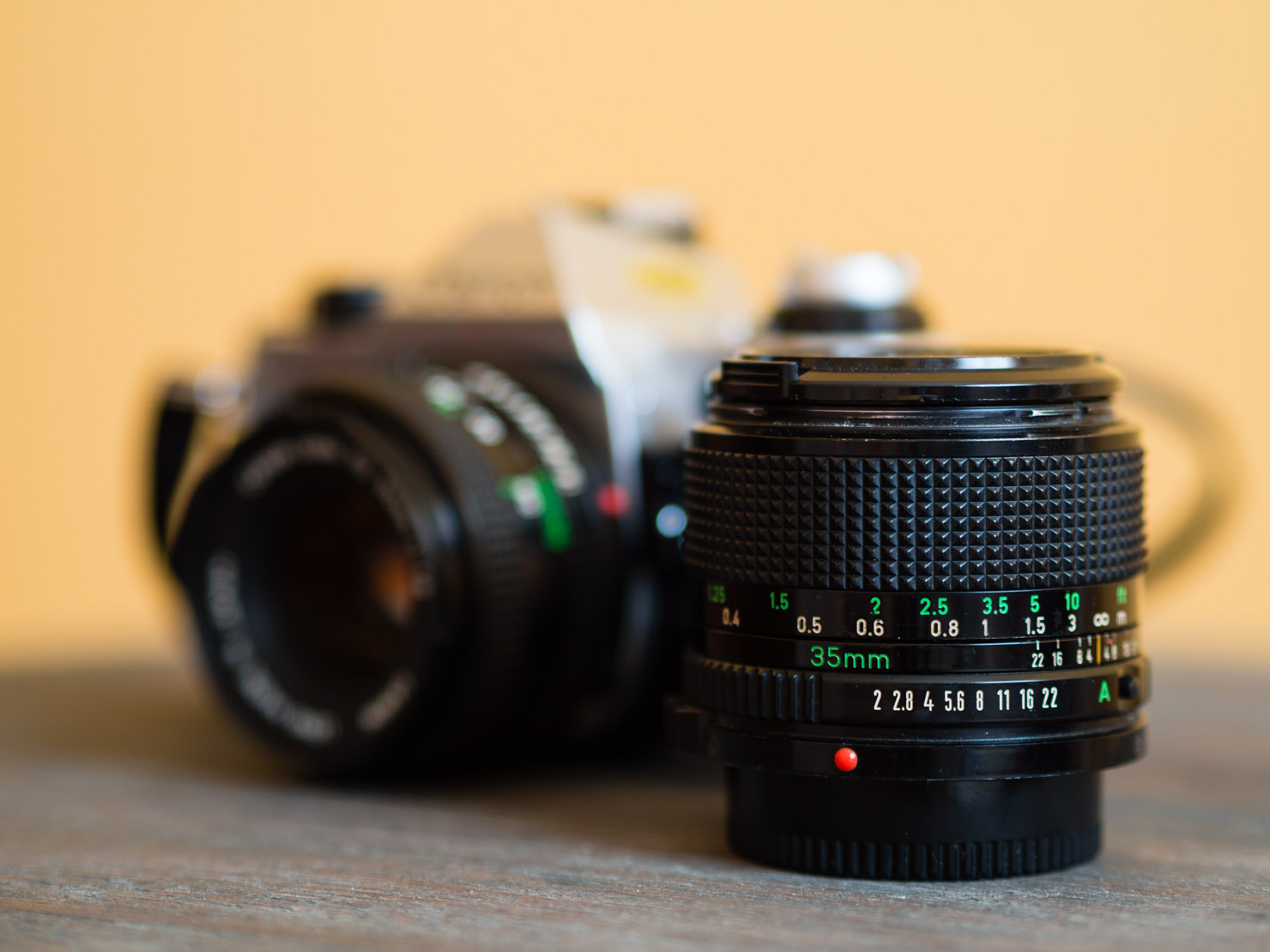
All Canon FD lenses have manual aperture rings and distance scales.
In today’s digital photography world, lenses play a huge part in determining the sharpness, bokeh quality and overall character in our images. However, they’re not the only thing that matters: the choice of camera body has a far greater impact today than it ever did during the film era. This is because in digital photography, the imaging sensor that lies in the camera body is the component that ultimately defines image quality: with the same lens, there will be a noticeable difference between an older digital camera and a newer one in terms of image resolution, color accuracy, dynamic range, etc.
Not so with a film camera. In film photography, film actually is the imaging sensor, and the camera body is little more than a user-controlled shutter that lets in the appropriate amount of light to record exposures. Therefore, the results are only determined by the lens and the film, with the camera body acting as a mere intermediary.
That’s why there was so much emphasis on lens construction back then, because lenses were the primary differentiating factor companies used, since users were expected to use a wide range of film emulsions with their cameras. Canon’s FD lenses offered plenty of alternatives at different price points, from the basic 50mm f/1.8 kit lens to the super high-end L-series lenses that represented the absolute cutting edge of technology at the time.
I own two FD prime lenses for my AE-1 Program: the aforementioned Canon FDn 50m f/1.8 kit lens and the wonderful Canon FDn 35mm f/2, the fastest FD lens ever in this focal length. Both are very well built by today’s standards, and both work incredibly well with my camera.

Canon FDn 50mm f/1.8 lens.
The 50mm f/1.8 lens is small, light, and sharp enough for all my needs. The quality of the bokeh is nothing to write home about, but still perfectly adequate. That’s mainly due to its rather boring design with only five aperture blades. But again, for a kit lens, there’s very little to complain about here, and it makes for a really nice and versatile fast standard prime.
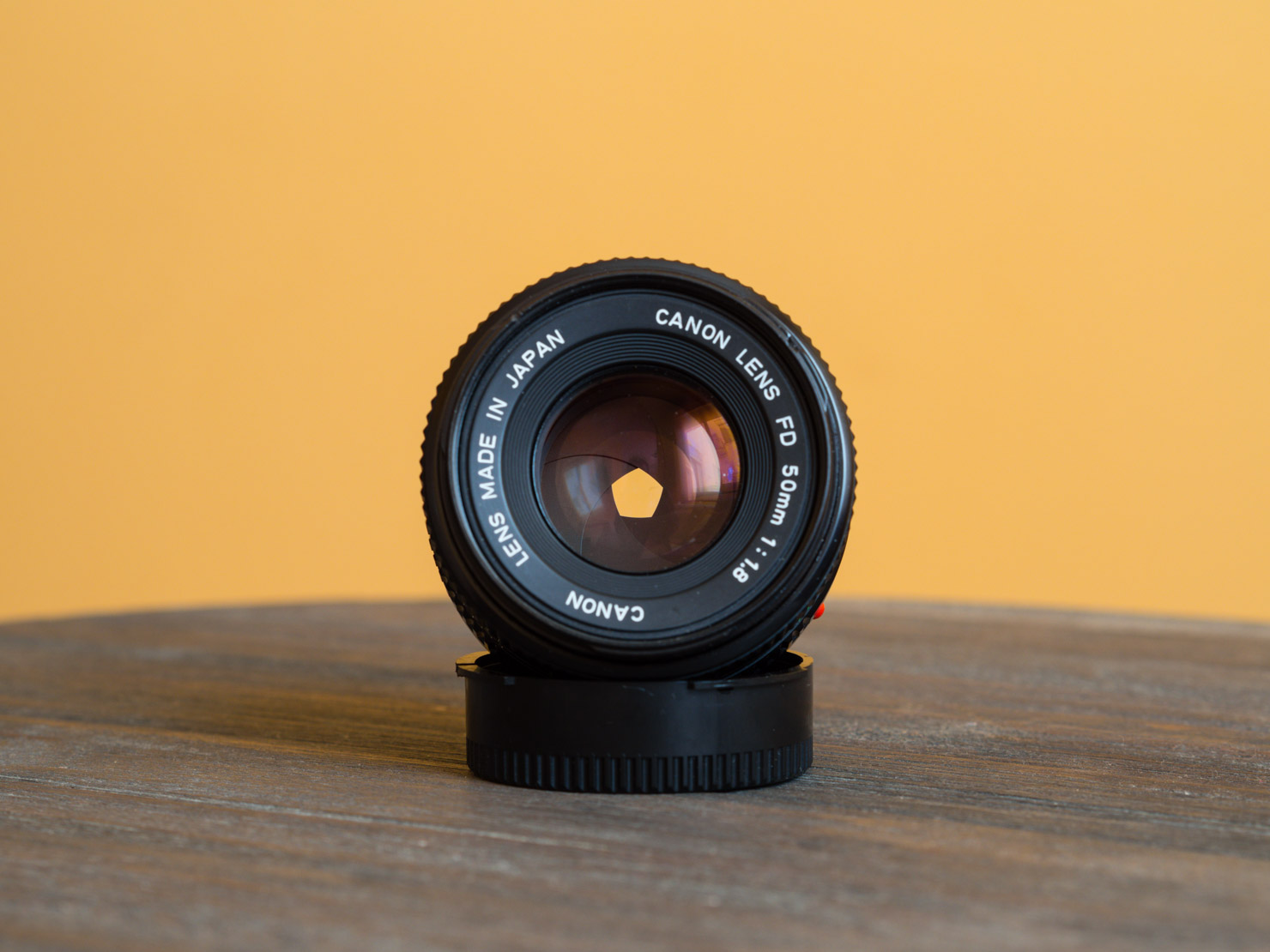

Canon FDn 50mm f/1.8 lens with five aperture blades.
The 35mm f/2 lens, on the other hand, features a significantly more advanced design with eight aperture blades, which in my my opinion creates a much more pleasing bokeh. Being a 35mm lens though, there’s not a whole lot of it to begin with but if you get close, it’s really not that hard to achieve decent subject separation. Other than that, the lens is a pleasure to use, with a nice smooth focusing ring and plenty of sharpness to boot. It’s a bit larger and heavier than the 50mm lens but then again, all FD lenses are larger and heavier than the 50mm lens.

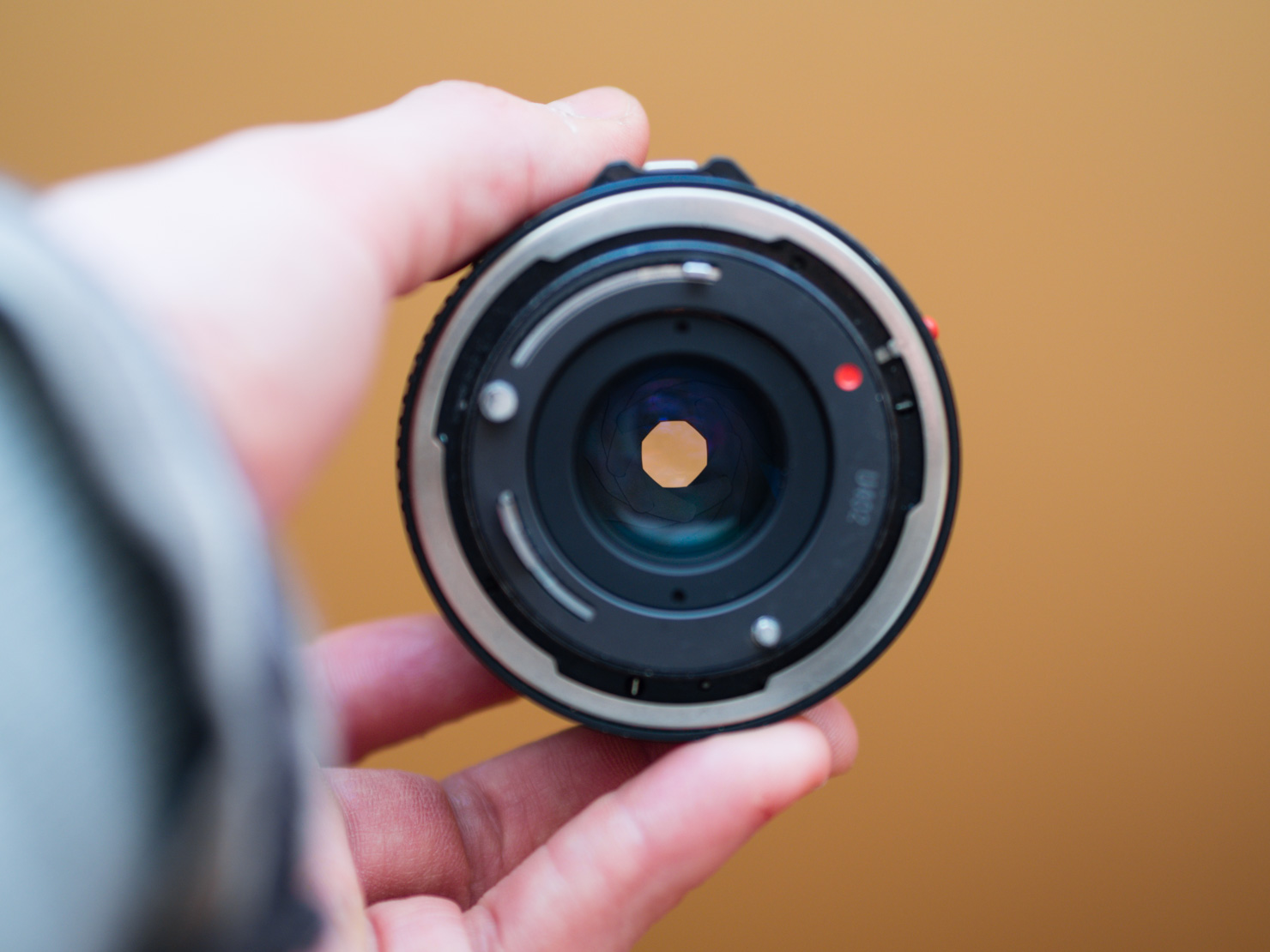
Canon FDn 35mm f/2 lens with eight aperture blades.
On the outside, both lenses are very similar: they share the same external design with metal barrels and both have a certain heft to them that is very comforting, particularly when compared with today’s mostly plastic lenses. Both lenses are the newer FDn versions, which feature a bayonet mount with a single release button, instead of the screw mount of older FD lenses.

Canon FDn 35mm f/2 lens.
The 35mm f/2 lens is, perhaps unsurprisingly, my favorite of the two. Actually, it is my favorite out of all the lenses I own, including my Micro Four Thirds primes and the newer autofocus version of the “nifty fifty”, which I also own for my Canon EOS 3 film SLR. This is in no small part because my favorite focal length is 35mm, and I have yet to own a similar lens for any of my other two cameras. I do hope to rectify that soon enough, though.
Choose your poison (a not-so-brief aside about film)
The Canon AE-1 Program offers all the features you need to shoot with virtually any type of film. It doesn’t really matter if you prefer to shoot slides, color negative film or silver-based black and white film, the AE-1 Program can do it all with ease.
One of the wonderful things about film is that there’s an emulsion for pretty much any situation you can think of. Want to get nice skin tones? Go with the excellent Kodak Portra. Want super saturated colors with minimal grain instead? Kodak Ektar is what you want to use. Want jaw-dropping, vibrant colors? Nothing can touch Fuji Velvia 50.
The list goes on and on.
You have gorgeous films for daylight, and others that excel indoors. You can choose the type of grain, and the size as well. All these possibilities and many more are right at your fingertips, and all it takes is a few seconds. Imagine a world where you could just as easily switch the imaging sensor of your digital camera. Imagine if you could have the Fuji colors whenever you wanted, or the unmistakeable Leica rendering, or the Canon sharpness by doing something as simple as swiping a memory card.

Kodak Tri-X 400 and Canon FDn 50mm f/1.8 lens.
That’s what photographers had during the film era, and in that regard, digital photography represents a massive regression. Imagine if Canon had tried to release a top of the line film camera in the 1980s, and then told their customers that they could only shoot Kodak Portra with it. Portra is a nice film, no doubt, but back then nobody would have bought such a camera. And yet, that’s the situation we have today, where we’re stuck with the same sensor for the life of our camera.
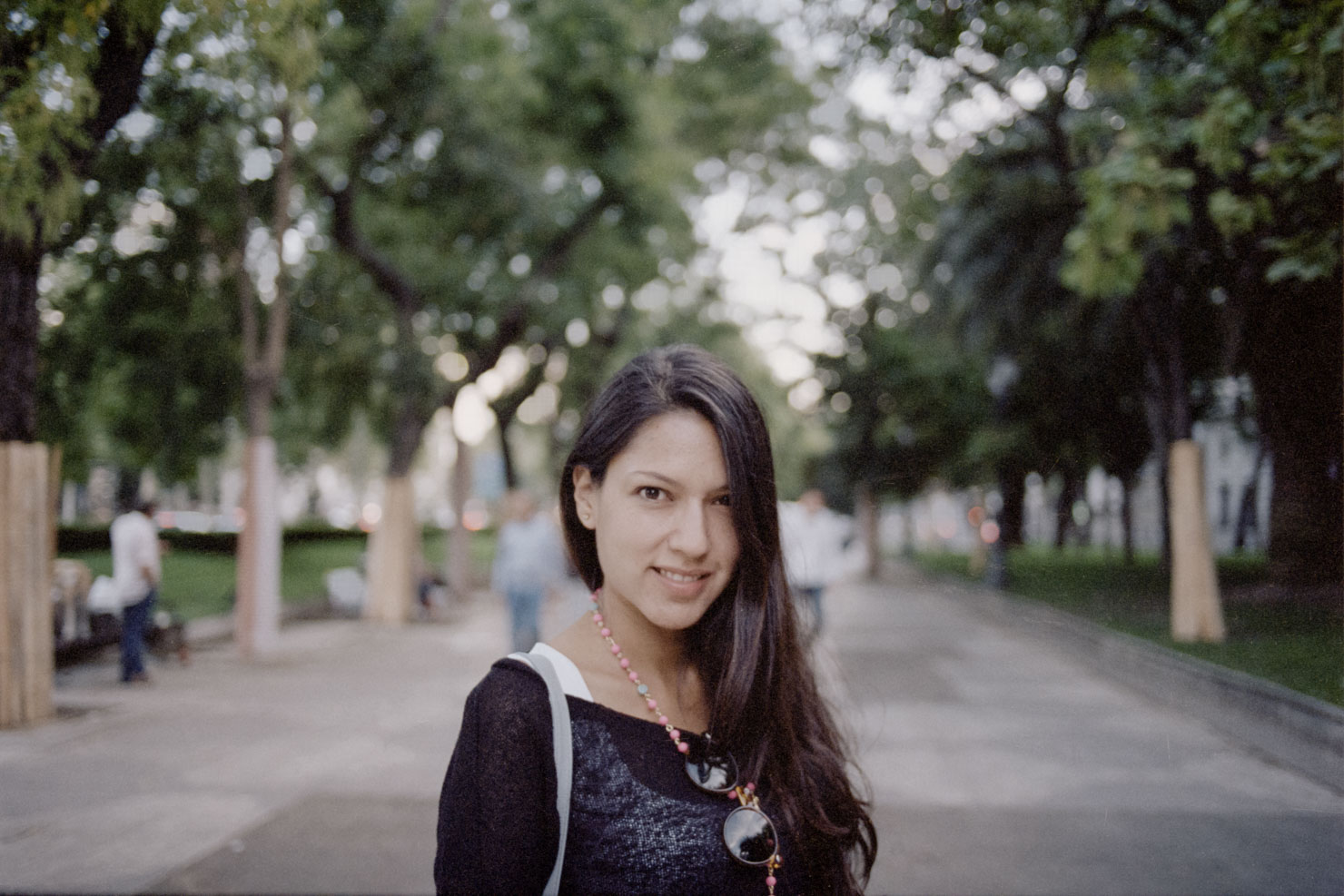
Kodak Portra 400 and Canon FDn 35mm f/2 lens.
Yes, you can play with digital files using post production software and adjust some of their properties to a degree, but you still can’t match the richness and variation of film. Some may argue that flexibility is one of the greatest features of digital sensors, in that you don’t need to make your decision until after you’ve shot the images and that with a film camera, if you choose the wrong film for the job, you’re screwed. To that I say yes, to a degree. It all comes back to being a deliberate photographer and being in control of your photography, as opposed to just shooting and dealing with what comes out of the camera later.
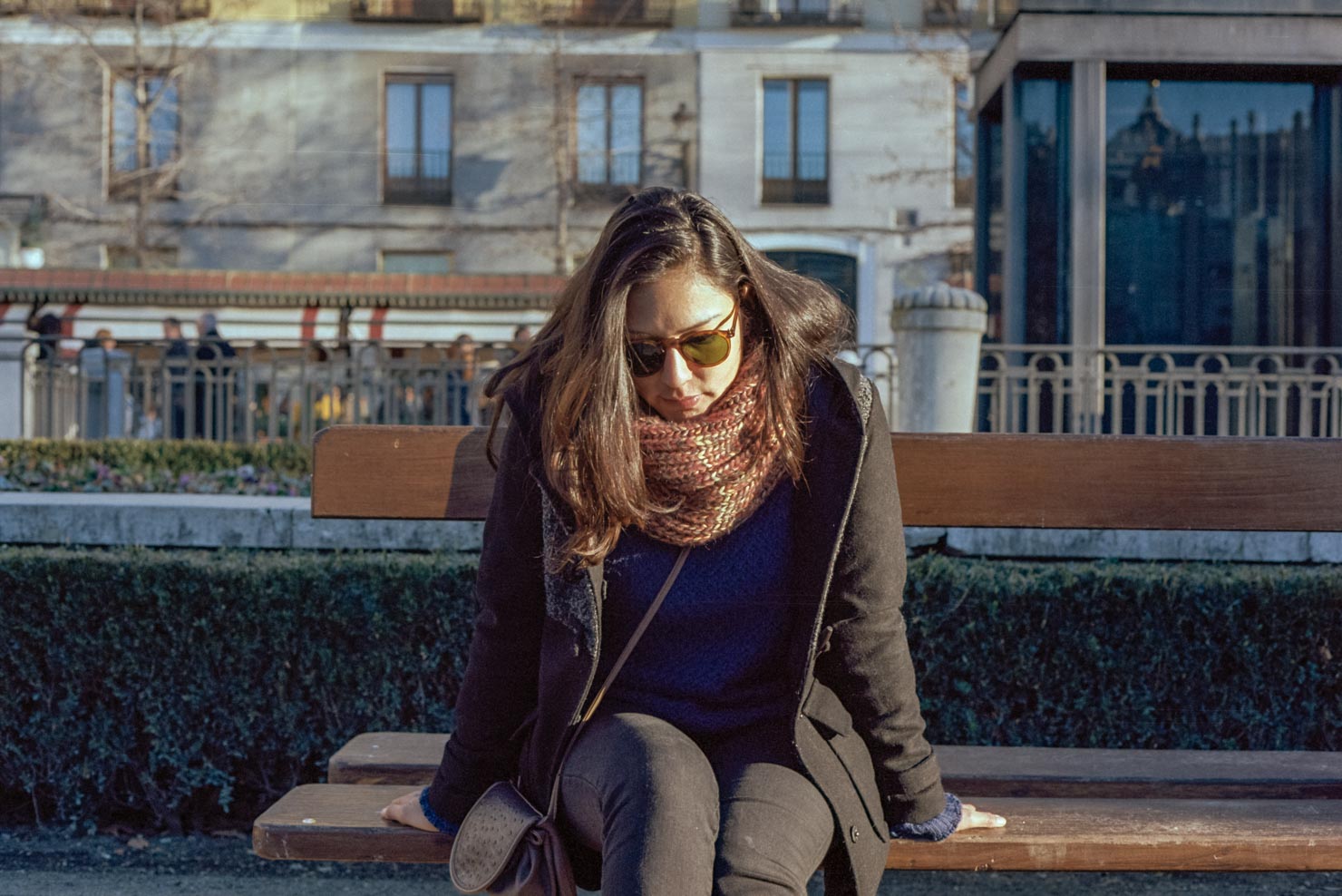
Kodak Ektar 100 and Canon FDn 50mm f/1.8 lens.
There’s no doubt that film forces you to think before you shoot, while digital eases your mind telling you that you can always fix your images later. Me, I’m all for thinking ahead, and I’m trying to incorporate everything I’m learning from shooting film into my digital photography as well. I’m absolutely fine with choosing my film ahead of a shoot and then committing to it and dealing with its strengths and weaknesses until I’ve finished the roll. Every day I wonder what mood I’m in, and what kind of images I want to get, and I choose my film accordingly. Far from being a tedious issue, to me it’s actually just plain fun.
Image samples
I’m by no means a film expert — I’m not even sure I qualify as a beginner — but in the few months I’ve been shooting with my AE-1 Program I’ve already captured some decent shots. Here are a few of my favorite ones, some of which you may have already seen around here before.
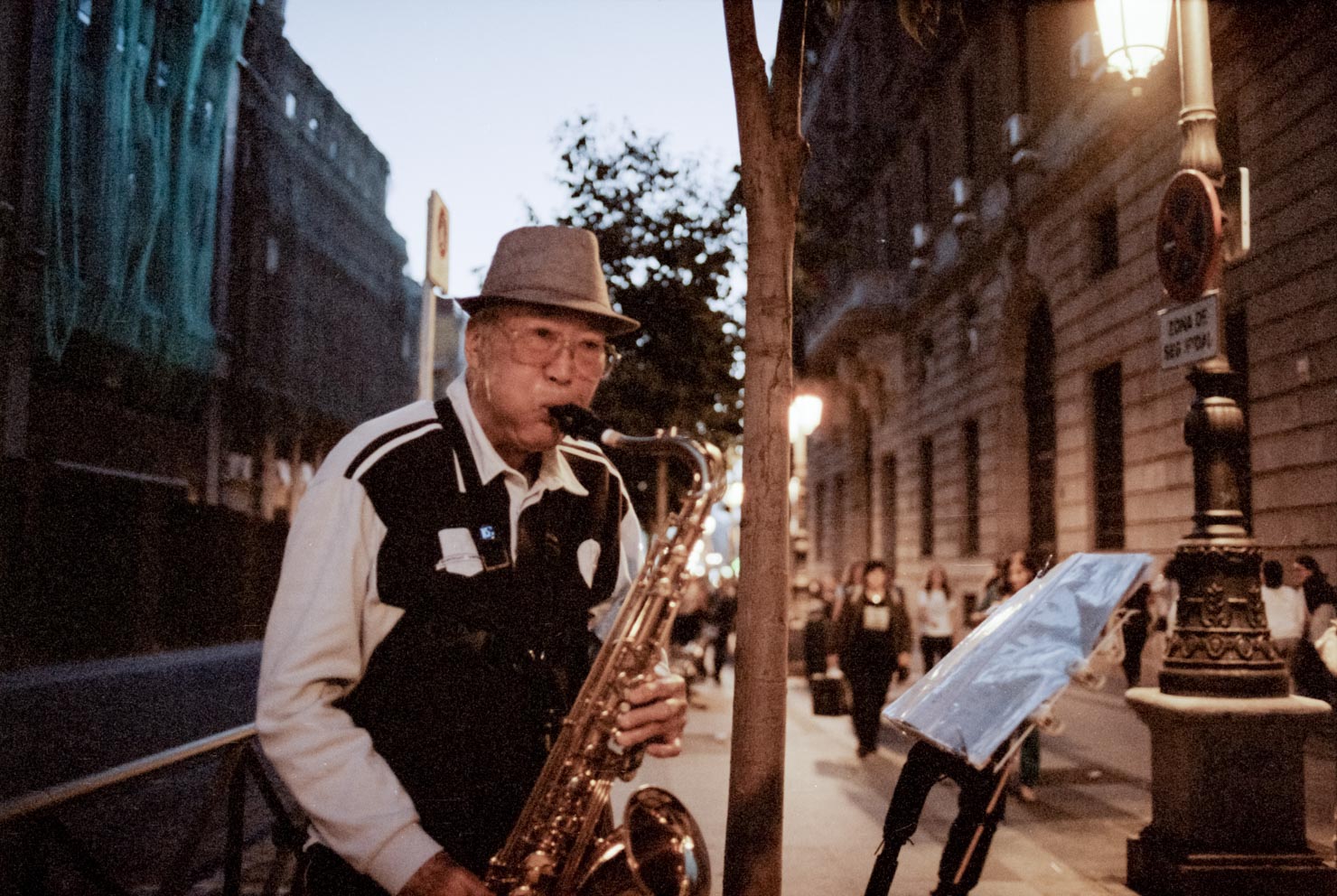
Kodak Portra 400 and Canon FDn 35mm f/2 lens.
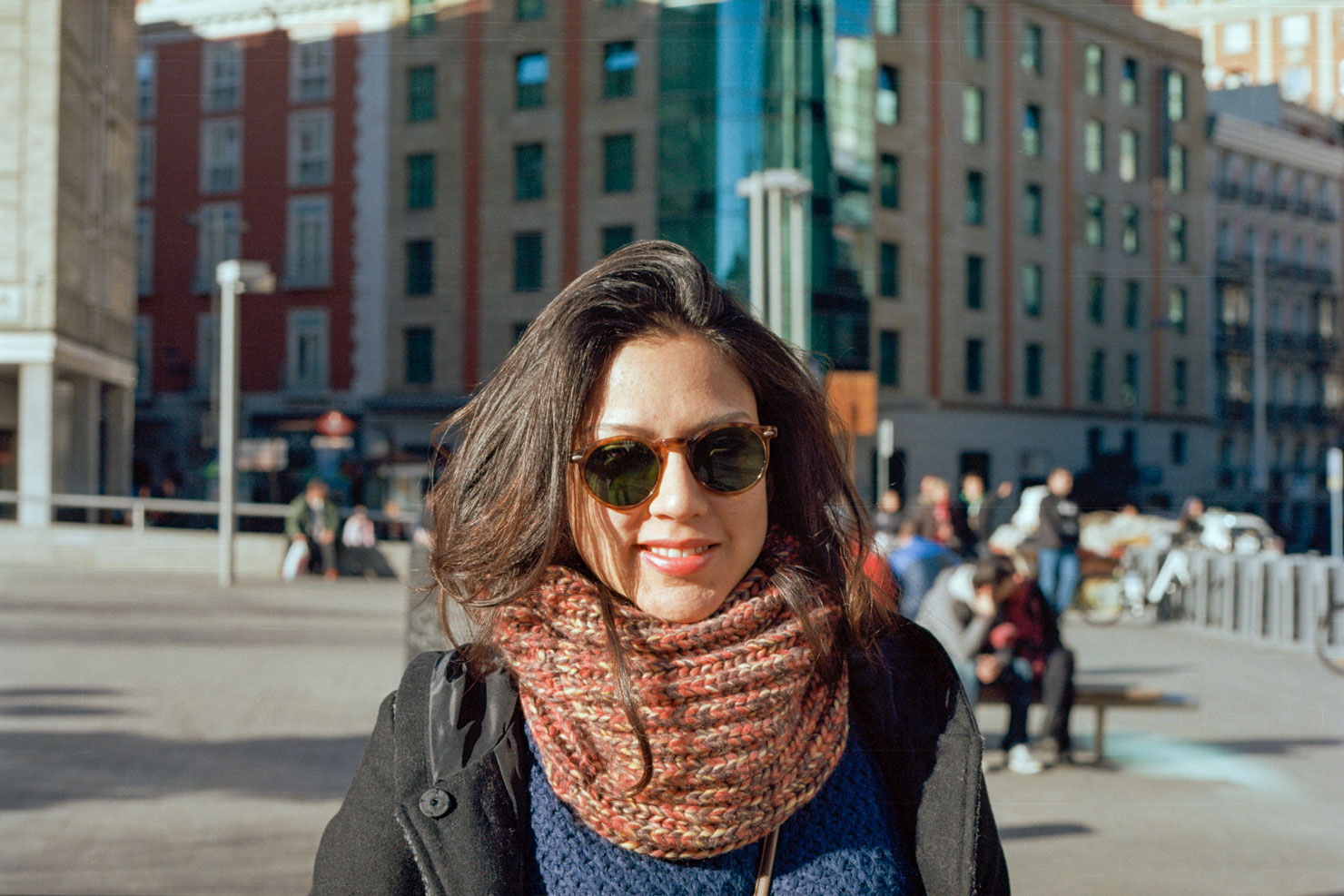

Kodak Ektar 100 and Canon FDn 50mm f/1.8 lens.



Kodak Tri-X 400 and Canon 35mm f/2 lens.

Kodak Tri-X 400 and Canon 50mm f/1.8 lens.
Final words
The Canon AE-1 Program is a technical marvel of simplicity, ergonomics, functionality and yes, charm. I truly enjoy using this camera and, despite not offering all the latest and greatest features, it has everything I need to create the images I want. Most importantly, it always leaves me wanting to come back for more, and inspires me to try new things and get out of my comfort zone. It’s everything a great camera should be.
I’ve recently purchased a Canon EOS 3 film SLR, which is one of the latest high-end film cameras that Canon made. Obviously, the EOS 3 offers many more features and better performance than the AE-1 Program but to me, the AE-1 Program has something else that the EOS 3 will never have. It’s an amazing tool that lets you see the world in a whole different way, and I love it.
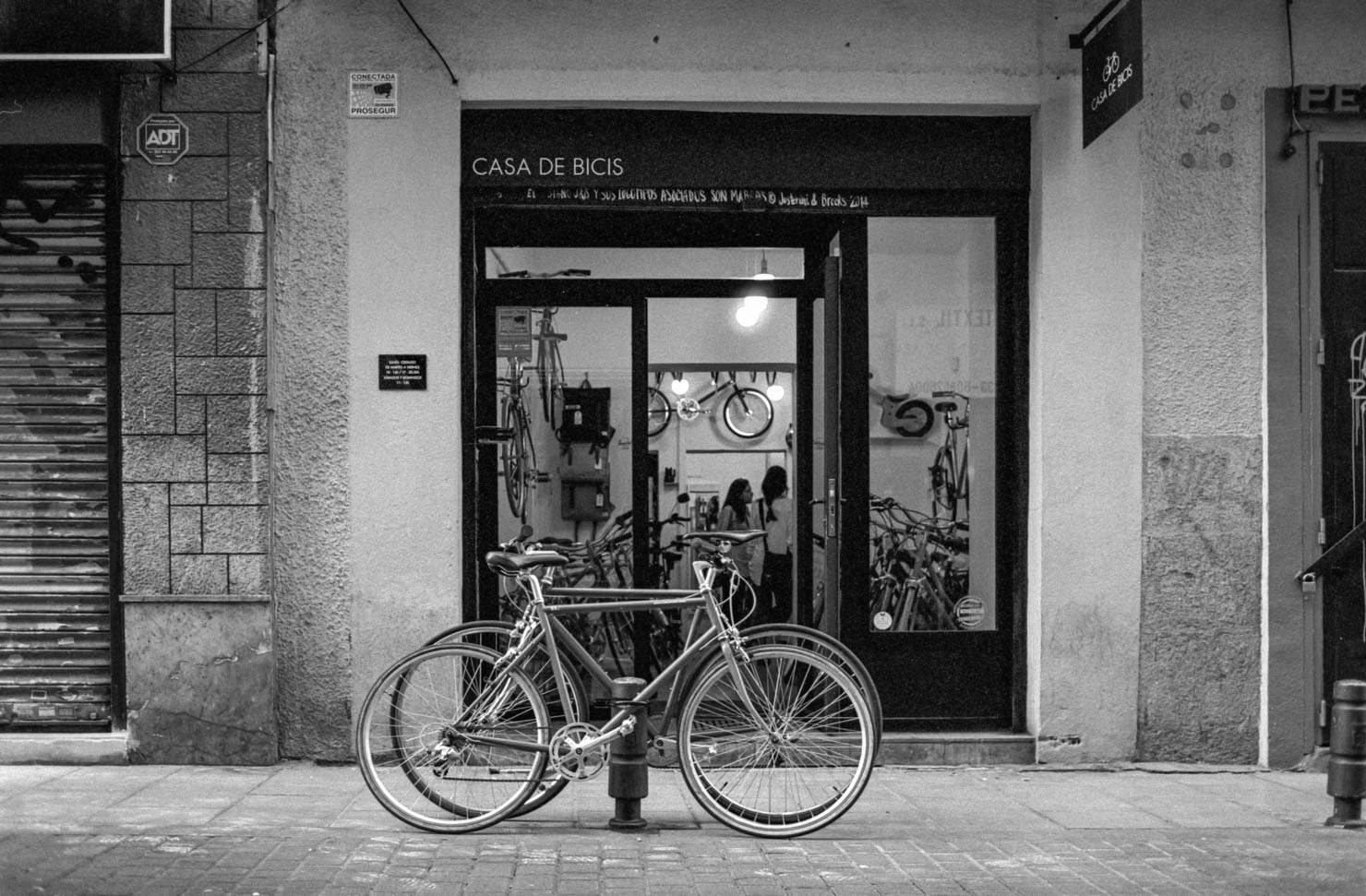
Kodak Tri-X 400 and Canon 35mm f/2 lens.
If you feel like feature creep is getting the better of you, the AE-1 Program is how you fight back. It was enjoyed by millions of people years ago, and it continues to be a landmark in photography for many film enthusiasts around the world. The Canon AE-1 Program group on Flickr is packed with tens of thousands of absolutely stunning images, and many new ones are still being added every day. This camera is not going anywhere.
It was good enough for my father, it’s good enough for me, and I’m willing to bet that if you give it a chance, it will be good enough for you, too.

Kodak Tri-X 400 and Canon 35mm f/2 lens.
